A sight for sore eyes

How PRIMED anti-fog masks provide relief from dry eyes and foggy glasses
Dry eyes and fogged glasses are two of the most frequent complaints we see from both healthcare professionals and consumers alike when talking about wearing single-use masks.
While there are some steps you can take to minimize these issues, we’ve taken this a step further, offering a line of anti-fog masks to provide added comfort and reduce visual distractions in critical care environments.
In this guide, we’re going to look at why dry eyes and foggy lenses occur and how our anti-fog masks work to minimize the impact of these common issues. Afterward, we’ll provide some simple tips about what you should and shouldn’t do to avoid fogged lenses and irritated eyes when using a disposable mask.
Dry eyes and foggy lenses explained
It might not seem obvious at first, but eye discomfort and foggy lenses share a root cause. When breathing while wearing a mask, there is typically a small amount of air leakage around the edges of the mask. One of the common areas this can happen is on the top edge of the mask—especially around the nose.
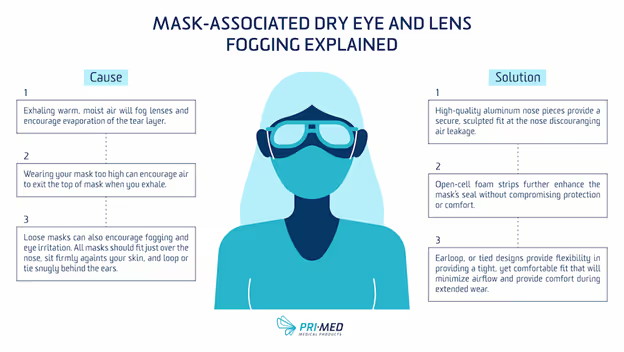
When a mask allows air leaks, you blast your eyes (and if you wear glasses, your lenses) with a wave of warm, moist air every time you exhale. Each time you do, your lenses fog up, and you’re left temporarily blinded until the fog disappears. At a minimum, this is annoying. But if you’re in a healthcare or other work environment, even minor distractions can have significant consequences.
Over time, these repeated blasts of air also dry out the tear film on your eyes by drawing away moisture and encouraging evaporation as the air moves across them. If you’re wearing an ill-fitting mask that compresses or otherwise hinders the natural movement of your face, it could also interfere with blinking and the operation of your eyelids, leading to reduced moisture and increased irritation.
With the increase in mask use throughout many parts of the world in 2020 and 2021—and increased complaints from the public about irritation—scientists continue to research other potential reasons these reactions might occur. They’ve even given this particular form of eye irritation an official name: mask-associated dry eye or MADE.
Avoiding mask-associated dry eye and fogged glasses by design
Now that you know why researchers suspect masks can lead to eye irritation and fogged lenses, let’s look at how you can avoid those issues in the first place. PRIMED has built a reputation around providing high quality PPE with designs that don’t simply meet the strict standards for healthcare workers but provide greater comfort based on how they typically use these items.
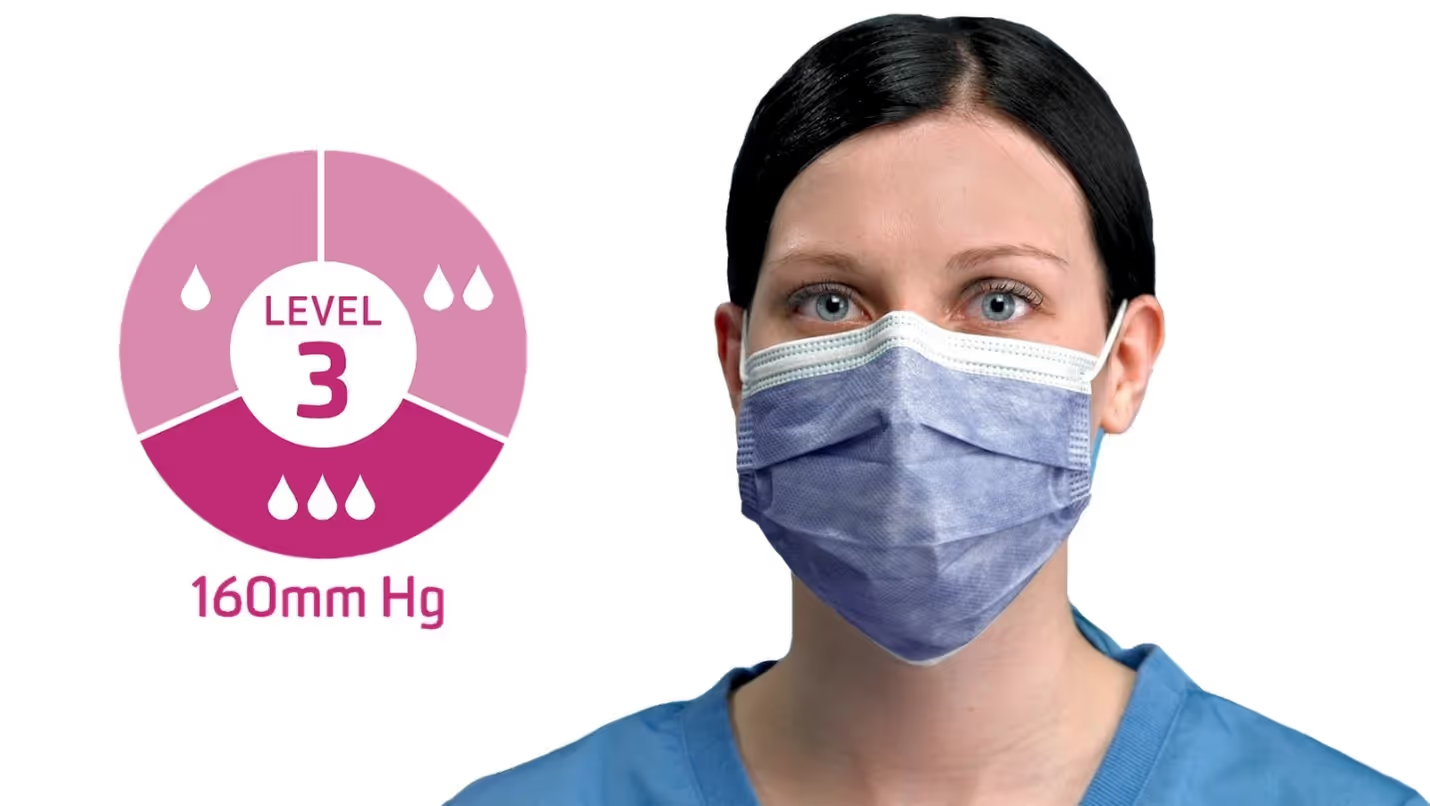
Our anti-fog line of single-use masks is a prime example of this. By taking a standard ASTM-rated medical facemask and making some key changes, our anti-fog masks provide a better seal, drastically reducing the amount of air leaving the top of the mask.
Less airflow means minimal lens fogging and reduced eye irritation. We accomplish this in two key ways:
1. High quality aluminum nosepieces: By providing an effective means of forming the mask to fit your nose, we noticeably reduce the air leaks that often occur around your nostrils and cheek bones. When properly fitted, this can also help minimize mask movement, further decreasing the risk of skin irritation.
2. Open-celled anti-fog foam strips: Placing these strips in key areas of the mask, we help to reduce airflow typically associated with fogged glasses and eye irritation. This foam also allows us to provide a more dependable seal while avoiding additional skin irritation like you might experience when taping the top of your mask or altering the mask fit in other ways.
These changes might seem simple at first glance, however, the result is an undeniable difference in fogging and eye irritation for most wearers while continuing to meet strict ASTM F2100 standards.
Tips to avoid eye irritation and lens fogging with single-use medical face masks
Our anti-fog mask designs provide a noticeable reduction in eye irritation and lens fogging without any additional effort on your part. But there are also options available to help fight these common issues that will offer some level of relief regardless of your mask design. Better still, most are already mask use best practices or common eye care recommendations. So they help to ensure you’re receiving the optimal protection from your PPE and taking care of your vision too!
Choose a mask with a proper fit
While you can’t always choose from different mask sizes, most feature ear loops or ties which you can tie in various ways to help ensure a tight fit against your nose, cheekbones, and neck.
Also, be sure the mask you choose doesn’t rest too high on your face. Many people wear masks that cross at the nose bridge and rest underneath their glasses just under the eye while further ensuring that any air exiting the top of the mask fogs the nearby lenses instantly.
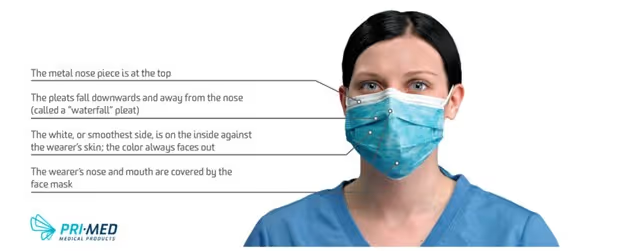
Wearing your mask too high can also prevent your lower eyelid from moving correctly, further encouraging eye irritation. The ideal mask will fit snug enough to avoid movement and air leakage without distorting your face or ears or placing undue stress on the ear loops or ties. The top of the mask should rest just below the top of your cheekbones when possible. For more details regarding proper mask fit, donning, doffing, and other critical considerations, check our mask fit guide.
Consider lubricating eye drops
Over-the-counter drops may be enough to alleviate your eye irritation. However, your primary care provider or eye specialist may also have prescription options available should irritation severity increase become a chronic issue.
Reduce screen time and take frequent breaks
While screens are an increasingly common part of both work and home life, we tend not to blink as often as we should and strain our eyes as we go through our digital tasks. This can exacerbate your eye irritation alongside frequent or extended mask wearing. Take breaks, blink regularly, and be kind to your eyes!
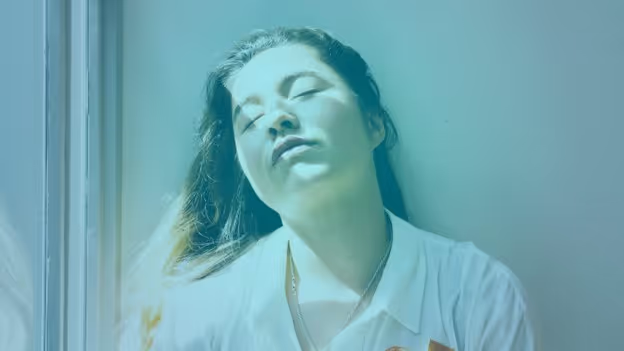
The 20-20-20 rule is an excellent start: After 20 minutes of screen time, look at something 20 feet (6 meters) away for 20 seconds. You can also practice slower blinking during your breaks, keeping your eyelids shut for a few seconds at a time to help promote tear production.
Minimize climate control where possible
We know you probably don’t have control of the thermostat where you work, in school, or at the local store. However, where you can do so, reduce the use of heating and air conditioning. These act as a dehumidifier, leeching moisture from the surrounding air and further aggravating dry eye symptoms. If you cannot control the devices around you or are required to use climate control to meet ventilation requirements, moving out of the direct airflow path may provide relief.
Use warm compresses
Use warm compresses for a few minutes during daily downtimes—such as before bed or after waking up in the morning. The warmth and moisture help promote tear layer health and prevent evaporation, reducing dry eye symptoms.
Wear goggles or protective eye gear
Goggles or other protective eye gear often sit well away from the edge of eyes, creating an area with restricted airflow and isolating them from the blasts of air coming out of your mask.

Adding yet another layer to your protective equipment might not be a perfect fix and could create additional comfort issues during long-term use. However, doing so for short periods can provide temporary relief in a pinch until better options are available.
What NOT to do to reduce dry eye or fogging symptoms
The Internet has no shortage of lifehacks or DIY tips on just about any topic you can imagine. Mask-associated dry eye and foggy glasses are no exception. While you might find some of our previous recommendations on these lists, we’ve also seen some advice that we wanted to warn you about and cannot recommend.
Never tape your mask to your face
We’ve seen advice in many places saying to use tape or even adhesive breathing strips across the top of your single-use mask to create a better seal. While this might work if nothing else is possible, we don’t recommend it. The tape itself might cause skin irritation. Also, holding the mask in place could hinder the movement of your eyelids or change the resting position of your cheeks or eyelids, leading to further irritation. Worse still, this means you’d have to touch-sensitive areas near your nose, eyes, and mouth to remove the mask—a big problem when it comes to preventing infections.
Never use tissues to pad Your mask
We’ve also seen recommendations to create a pad using tissue or another soft material and hanging it over the top of the mask, trapping it between the mask and your skin. This is, essentially, the same thing we do with our anti-fog foam strips. However, we use an open-cell material that will not irritate the skin and still allows the mask to meet ASTM F2100 requirements.
In other words, while it’s just a foam strip on paper, we tested and precision-engineered the foam to do its job in a way that a roll of tissue or other material assembled at random will never consistently do. Altering your mask or placing anything between your mask and skin risks compromising your mask’s thoroughly tested and proven design. While it might alleviate dry eye symptoms or reduce lens fog, you could be placing yourself and those around you at risk.
Key takeaways
- Eye irritation (also known as mask-associated dry eye or MADE) and foggy glasses are two of the leading complaints regarding frequent or extended wearing of single-use masks.
- Eye irritation and fogging are typically caused by warm, moist air escaping the top of your mask at the cheek or nose areas.
- PRIMED’s anti-fog mask design uses high quality aluminum nose pieces and open-cell foam to address this concern without compromising mask quality or protection capabilities.
- Proper fit is everything when it comes to reducing eye irritation and lens fogging. Mask ties or ear loops should fit snug around the ears. The mask itself should rest lightly against the skin, cross the lower end of your nose (not the upper bridge), and rest just near (not over) the tops of your cheekbones.
- Over-the-counter or prescription eye lubrication drops can also relieve dry eye symptoms—especially when used in conjunction with an anti-fog mask.
- Using warm compresses can help to encourage tear layer production and reduce dry eye symptoms.
- Reducing screen time or focused reading time and taking frequent breaks can help to avoid eye strain and irritation as well.
- Never alter your mask or use tape to seal your mask, as this can create additional concerns alongside the eye irritation and fogging issues you are already experiencing.
PRIMED’s full line of PPE offers protection for healthcare workers and the general public alike. With more than two decades of experience manufacturing and supplying single-use masks, gowns, and other protective gear to some of the biggest healthcare providers in Canada, our wholly-owned manufacturing and supply chain gives us the ability to address virtually any need while ensuring a level of quality and delivery consistency that makes us a leader in our market. Browse our selection and contact us today to discuss how we can help take the hassle out of your PPE purchasing or supplying experience.
Related Resources
PRIMED MRI Safe Mask: Safe by Design for Purpose-Built Protection
PRIMED's ASTM Level 3 MRI Safe Masks offer a high-quality, purpose-built solution that merges MRI compatibility with premium protection.
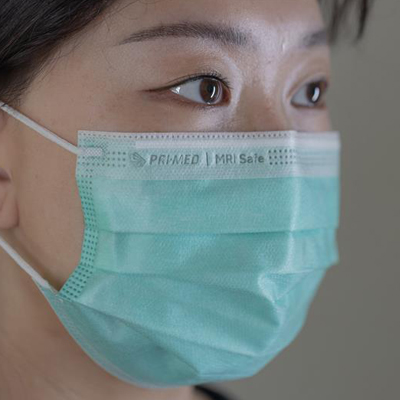
From the Sterile Core to the Decision Table: Elevating the Voice of MDR Professionals
MDR professionals don’t just process products, they influence how they are designed, selected, and standardized.
%20-%20Sterlization%20Wrap%20Display%20(1).jpg)
Protecting with Purpose: The Supply Chain Behind the Mission
PRIMED, resilient through the pandemic, has evolved our supply chain - now stronger, smarter, and ready to meet future challenges with agility and confidence.


